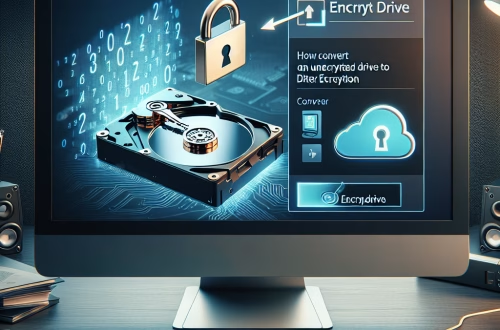BitLocker Network Unlock Explained
BitLocker Network Unlock is a feature in Windows that allows BitLocker-encrypted drives to automatically unlock during system startup when connected to a trusted network. This feature leverages a combination of the Trusted Platform Module (TPM) and a Windows Deployment Services (WDS) server to authenticate the system and unlock the drive without requiring user intervention. It is particularly useful in enterprise environments where systems are frequently rebooted or where physical access to input a PIN or recovery key is impractical. Common triggers for BitLocker Network Unlock include system reboots, network connectivity issues, or misconfigurations in the WDS server.
What This Means for You
- Immediate Impact: If BitLocker Network Unlock fails, your system may not boot, leaving you unable to access your data until the issue is resolved. This can disrupt workflows, especially in enterprise settings.
- Data Accessibility & Security: Without proper configuration of BitLocker Network Unlock, your data remains secure but inaccessible. Ensure your recovery key is backed up securely, as it may be required to regain access to your system.
- System Functionality & Recovery: Failure to resolve BitLocker Network Unlock issues can render your system unusable. Troubleshooting may involve checking network settings, TPM configurations, or using the
manage-bdecommand-line tool. - Future Outlook & Prevention Warning: Ignoring recurring BitLocker Network Unlock issues can lead to prolonged downtime. Proactive configuration and regular testing of the WDS server and TPM settings are essential for seamless operation.
BitLocker Network Unlock Solutions
Solution 1: Verify WDS Server Configuration
BitLocker Network Unlock relies on a properly configured Windows Deployment Services (WDS) server. Follow these steps to ensure it is set up correctly:
- Open the WDS management console (
wdsmgmt.msc). - Verify that the server is authorized and running.
- Ensure the DHCP server is configured to provide the correct network boot information.
- Check that the BitLocker Network Unlock certificate is installed and valid.
Solution 2: Check TPM Settings
The Trusted Platform Module (TPM) must be enabled and functioning correctly for BitLocker Network Unlock to work. To verify and reset the TPM:
- Open the TPM Management Console (
tpm.msc). - Ensure the TPM is enabled and initialized.
- If necessary, clear the TPM and reinitialize it using the TPM Management Console.
- Reconfigure BitLocker to use the TPM by running
manage-bde -protectors -add C: -tpmin Command Prompt.
Solution 3: Use the Recovery Key
If BitLocker Network Unlock fails, you can use the recovery key to unlock the drive:
- Boot the system and wait for the BitLocker recovery screen to appear.
- Enter the 48-digit recovery key when prompted.
- Once the system is unlocked, reconfigure BitLocker Network Unlock to prevent future issues.
Solution 4: Advanced Troubleshooting with Command Prompt
For advanced users, the manage-bde command-line tool can be used to troubleshoot BitLocker Network Unlock issues:
- Boot into the Windows Recovery Environment (WinRE).
- Open Command Prompt and run
manage-bde -statusto check the encryption status. - Use
manage-bde -unlock C: -rkto unlock the drive with the recovery key. - Reconfigure BitLocker Network Unlock by running
manage-bde -protectors -add C: -nw.
Solution 5: Data Recovery Options
If all else fails, specialized data recovery tools or services may be required to access the encrypted data. Ensure you have a valid recovery key or certificate to proceed with recovery.
People Also Ask About
- What is BitLocker Network Unlock? A feature that automatically unlocks BitLocker-encrypted drives during system startup when connected to a trusted network.
- Why is BitLocker Network Unlock not working? Common causes include misconfigured WDS servers, TPM issues, or network connectivity problems.
- How do I enable BitLocker Network Unlock? Configure the WDS server, ensure TPM is enabled, and use the
manage-bdetool to add the network unlock protector. - Can I use BitLocker Network Unlock without a TPM? No, BitLocker Network Unlock requires a TPM for secure authentication.
- Where is the BitLocker Network Unlock certificate stored? It is stored on the WDS server and must be distributed to client systems.
Other Resources
For more detailed information, refer to the official Microsoft documentation on BitLocker Network Unlock and Windows Deployment Services.
How to Protect Against BitLocker Network Unlock Issues
- Regularly back up your BitLocker recovery key to multiple secure locations, such as a Microsoft account, a USB drive, and a printed copy.
- Ensure the WDS server is properly configured and regularly tested for compatibility with BitLocker Network Unlock.
- Keep the TPM firmware and drivers up to date to avoid compatibility issues.
- Monitor network connectivity and DHCP settings to ensure seamless operation of BitLocker Network Unlock.
- Conduct periodic audits of BitLocker configurations to identify and resolve potential issues proactively.
Expert Opinion
BitLocker Network Unlock is a powerful feature for enterprise environments, but its complexity requires careful configuration and maintenance. Proactive management of WDS servers, TPM settings, and network infrastructure is essential to ensure uninterrupted access to encrypted systems.
Related Key Terms
- BitLocker recovery key not working
- TPM error BitLocker
- BitLocker drive encryption stuck
- manage-bde command prompt
- BitLocker automatic unlock issue
- Windows 10 BitLocker fix
- WDS server configuration
*Featured image sourced by Pixabay.com


